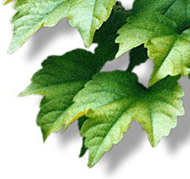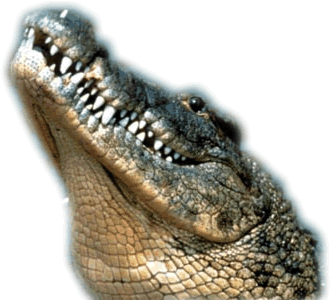



Description
Considerable variation exists throughout the range of the Nile crocodile. Generally, it is a large crocodilian, averaging 5 m in length but reportedly reaching 6 m in rare instances. There are dubious reports of 7 m animals having existed, but these are hard to verify. There is some evidence that Nile crocodiles in cooler countries (eg. South Africa) reach slightly smaller adult sizes (4 m). There are two known population of dwarf Nile crocodiles living on the extreme limits of the species' range, in Mali and even the Sahara Desert! Due to suboptimal conditions, adults average between 2 and 3 metres. Juveniles are dark olive brown with black cross-banding on the tail and body. This banding becomes fainter in adults.
Distribution:
Angola, Benin, Botswana, Burkina Faso, Burundi, Cameroon, Central African Republic, Chad, Congo, Egypt, Ethiopia, Equatorial Guinea, Gabon, Gambia, Ghana, Guinea, Guinea Bissau, Ivory Coast, Kenya, Liberia, Madagascar, Malawi, Mali, Mozambique, Mauritania, Namibia, Niger, Nigeria, Rwanda, Senegal, Sierra Leone, Somalia, South Africa, Sudan, Swaziland, Tanzania, Togo, Uganda, Zaire, Zambia, Zimbabwe. Fairly recently extirpated from Israel, and less recently (beginning of the 19th century) from the Cormoros islands (thought to be due to an increase in aridification and thus a decrease in suitable habitat)
Habitat
Wide habitat preferences, reflecting their success and distribution- e.g. lakes, rivers, freshwater swamps, brackish water. Sub-adults disperse into different habitats, away from breeding areas, when they reach a length of approximately 1.2 m. Nile crocodiles modify their habitat by digging dens (usually with their snouts and feet) into which they retreat from adverse conditions such as temperature extremes
Reproduction
This species digs hole nests up to 50cm deep in sandy banks, several metres from the water. These may be in close proximity to other nests. Timing of nesting behaviour varies with geographic location - it takes place during the dry season in the north, but at the start of the rainy season further south, usually from November through to the end of December. Females reach sexual maturity around 2.6 m, males at around 3.1 m. Females lay around 40 to 60 eggs in the nest, although this number is quite variable between different populations. Females remain near the nest at all times. Incubation time averages 80 to 90 days (ranges from 70 to 100 days), after which females open the nest and carry the juveniles to the water. Both males and females have been reported to assist hatching by gently cracking open eggs between their tongue and upper palate. Hatchlings remain close to the juveniles for up to two years after hatching, often forming a creche with other females. As with many crocodilians, older juveniles tend to stay away from older, more territorial animals.
Despite the vigilance of the female during the incubation period, a high percentage of nests are raided by a variety of animals, from hyaenas and monitor lizards to humans. This predation usually occurs when the female is forced to leave the nest temporarily in order to thermoregulate by cooling off in the water.
Diet
Although the juveniles are generally restricted to eating small aquatic invertebrates and insects, they soon move onto larger vertebrates (fish, amphibians and reptiles). Adults, however, can potentially take a wide range of large vertebrates, including antelope, buffalo, young hippos, and large cats. Fish and smaller vertebrates often form the greatest part of their diet, however. As with C. porosus, they have a reputation as being man-eaters, although probably kill more people than all other crocodilian species combined. Along with hippos and lions, crocodiles account for perhaps a few hundred deaths and disappearances each year, although exact figures are very hard to verify. Nile crocodiles will also often scavenge from carcasses, together with a number of other animals, all of which seem to tolerate each others' presence. They have a rather well-known relationship with several species of birds (e.g. spur-wing plover, called "trochilus" by Herodotus) which are reputed to pick pieces of meat from between the teeth of the crocodiles as they gape - the birds gain a meal, the crocodiles have their teeth cleaned of scraps they could not eat themselves. Whether such a mutual relationship actually exists is hard to determine from the literature and anecdotal reports, but seems more likely to be opportunistic rather than symbiotic.


